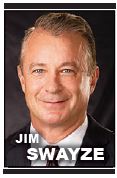By Jim Swayze
People who work at small and medium-sized businesses (SMBs) often treat each other like family — management and employees alike. Together, they work in service to their customers and toward growing their business — all while closely managing costs.
Health benefits are a big part of this management and cost equation. Unfortunately, too many SMBs believe they are limited to providing only one or two health plan options. As a result, employees whose healthcare preferences and needs vary depending on age, fitness and a host of other factors can become frustrated.
Take better careof work families
By offering multiple health plans, employers can set themselves apart from the competition when it comes to attracting talent. They can better retain their employees by more adequately meeting the variety of health needs within their workforce as well. Here’s how:
Employer benefits of multiple plan options
As SMBs look towards 2021 offerings, they can consider health benefits that range from wallet-wise, tax-exempt health savings accounts (HSAs) to robust preferred provider organization plans. Instead of offering only one or two health plans, employers can bring multiple options to the retention/recruiting table. Then, employees can pick a plan that is best tailored to their individual needs and personal budget.
Working with an insurance carrier, SMBs can apply funding strategies to include multiple health plan options in their employee benefit packages. They can provide insurance coverage that allows the employer to set contributions based on the lowest-cost plan and then enable employees to “buy up” their coverage to meet preferred or specific healthcare needs. The mix could also include a high-deductible plan that includes an HSA, and so on.
Some health insurers offer cost-share programs with a return of premium for employers if the plan runs better than expected. Employers may also consider self-funded or partially self-funded options that can allow employers to benefit from lower-than-expected claims costs.
Offering choice among a suite of health plans brings employees into the decision-making process. As a result, they better understand the connection between plan benefits and cost. When employees can personalize their plans, they are more likely to get the healthcare they need when they need it, and hopefully have deeper engagement with their healthcare choices. In the long run, this means a better return on investment for SMBs.
What’s in it for employees
When it comes to what they value about healthcare, people have different perspectives and preferences. Those who travel might appreciate having access to broad provider networks. Others prioritize cost savings and lean towards a narrower coordinated care network of local providers. Multiple plan offerings allow individuals to choose their benefits based on the doctors and hospitals in each network structure and how the insurance coverage aligns with their own lifestyle.
Employees will also benefit when they can select a health plan that fits their stage of life, especially those with chronic conditions or specific care needs. Healthcare is better when it’s personalized to meet medical needs and individual preferences, which can vastly vary between age groups:
• Young and single employees typically gravitate towards lower-cost, catastrophic coverage that provides support in the unlikely event of a major accident; in this case, a high-deductible plan would make the most sense.
• Adults in their 20s and 30s with growing families tend to lean towards health plans with richer benefits. They understand that urgent care visits are more likely to occur and are typically more interested in a health plan that will cover costs outside of wellness visits.
• Middle-aged employees with older children more often than not want a plan that covers their unique health needs but are equally focused on saving money as they begin looking towards retirement. This is when a high-deductible plan including an HSA funded by pre-tax dollars becomes a valuable employee benefit.
Many seniors nearing the traditional retirement age often prefer to stay on their employer’s health plan, especially if it includes an HSA. Many plans include pharmacy benefits that help employees to reduce their prescription costs.
Overall, health plans that integrate medical and pharmacy coverage help employees make fewer trips to the ER, improve medication adherence and get better care for chronic conditions. Assistance programs embedded in a health plan can help employees and their household members deal with personal problems that might have a negative impact on work performance, health and well-being.
What to look for in health plans
Navigating the multitude of benefits options is a challenging task to do alone. For SMBs, finding the right health insurance partner is critically important to meeting both employer and employee needs. Through that partnership, employers can effectively navigate the steps between choosing a plan, enrolling employees and providing ongoing support for employees.
When researching a health insurance carrier, be sure to consider:
• In-person and online assistance with managing employee enrollment, eligibility and benefits.
• Provider network choices that meet employer and employee care needs and budget.
• Low-cost virtual care options and comprehensive behavioral health support.
• Integrated medical and pharmacy coverage enabling significant costs savings per member.
• No-cost wellness incentive programs that discount employer health plan premiums.
• Responsive customer service that specializes in small group business — local is better.
• Self-funded options that can provide more flexibility to customize benefits.
Employers who need more help planning for 2021 benefits and identifying choices on behalf of their employees would be well-served by enlisting the support of a trusted health insurance broker or carrier.
Jim Swayze is president of Regence BlueCross BlueShield of Utah.








